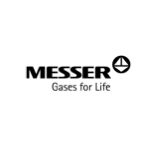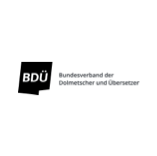
Agency for international CMS solutions and content processes
- Advice on the use of Content management systems in an international context
- Process consulting for international content
- Experts for International CMS solutions and content processes
As Agency for international CMS solutions and content processes we advise your company on the ideal use of content management systems and the establishment of content processes in an international context. With our experience you can Internationalization and appealing content in the form of images, texts, videos and graphics with added value for your customers via a central CMS manage and process.
"With a focus on international requirements, we will find the right CMS solution for your company that meets your needs and can be easily integrated into your daily workflow. This will enable you to create and manage content with ease in the future and thus significantly drive your growth in international markets."
CMS solutions: Advice from qwp
What can you expect from qwp consulting?
International CMS solutions for your company
With our extensive experience as an agency for international CMS solutions, we can advise your company on the selection of the ideal content management system. The wide variety of CMS solutions on the market presents many companies with the question of which software can be used to implement internationalization quickly and easily. Systems such as Adobe Experience Manager, WordPress, Joomla, TYPO3, Drupal or Contao offer basic functions for operating websites and can be individually expanded in their functionality with plug-ins and extensions. Based on the jointly formulated requirements and needs, qwp looks for the perfect CMS that makes your employees' day-to-day work easier and centrally manages international content.
Develop content processes for an uncomplicated workflow
As part of CMS consulting, we support you in the development of content processes. Our recommended content management systems are designed to meet the special requirements of multilingualism, facilitate translation processes for different content and provide automation solutions to drive forward the internationalization of your company in an uncomplicated manner. Content planning and the creation of content can be implemented centrally via a CMS solution, as can publication and, if desired, analysis and the resulting optimization. The result is a content process that can be controlled by managers by assigning specific rights to all those involved. The workflow designed together with you will make the work of the employees involved in the content (text, image & video) much easier.
Find the perfect CMS solutions
What are the advantages and disadvantages of content management systems?
- Separation of layout and content: The layout or design and the respective contents of the website are created separately.
- No previous knowledge necessary: With CMS training, you can quickly get started with various content management systems.
- Rights management: Employees can be assigned different roles and rights. Editors can edit texts, for example, but cannot make any fundamental changes to the website.
- Simple text and image processing: Most CMS have a text editor and a media library for simplified content creation.
- Quick and easy updating of content: The content on the website can be updated within a very short time without any programming effort.
- Cost reduction: You can maintain and adapt content yourself. The integration of external service providers is not necessary.
- Limited design of the website: The design or layout is relatively fixed and rigid. Appropriate themes must be developed for changes.
- Dependence on a CMS solution: Once you have decided on a CMS, it is not possible to switch without great effort.
International content processes
What are the challenges with international content?
International content processes for your company
Internationalization not only opens up diverse customer potential, but also enables new production locations, for example. Entering new markets is therefore not only a good idea if the potential for products or services in the domestic market is limited or exhausted. Partners in new markets also increase a company's innovative strength and thus its future viability. However, an international, digital strategy must be well planned: For internationalization to be successful in the long term, awareness and trustworthiness of the company or brand must be ensured. Both must be created and consolidated in the long term through content and campaigns geared towards the target markets. Accordingly, the content processes must also be aligned with the new requirements. The first step is to analyze target groups in order to determine market-specific differences in demographics, demands and habits. Content - e.g. text, images, podcasts or video - is then adapted for local markets or created from scratch. Traditional peaks in the editorial and marketing plan can either shift or even be omitted because, for example, certain holidays do not exist in all target markets. The question of which content is consumed at all and on which devices is not insignificant. For example, if a country's existing infrastructure does not allow videos and images to be displayed quickly, focusing on text can pay off. Tracking page views, visits, users, number of pages, dwell time, conversion and bounce rate and the resulting continuous content maintenance and optimization should therefore be an integral part of the content process.
Special features of international content
To build trust with users and customers, it is essential to rely on native speakers for content. Country-specific factors that are taken into account in the content process work together to promote the acceptance, comprehensibility and relevance of your company's content and offers. Translation processes must therefore be optimized so that existing content is translated into the language of the target market by native speakers. Only native speakers can take linguistic peculiarities (e.g. grammar and tonality) and cultural factors (e.g. public holidays and national customs) into account appropriately. Existing content is enriched with regionally relevant content. When creating content, suitable image motifs are selected that take into account the respective religious, political and social norms, the significance of colors is examined and a good user experience is taken into account. This is the only way to ensure the high quality of international content.
Content processes in an international context
Best practice in international content processes
- Objective
What goal should be achieved with the creation of international content? This question forms the basis, as content can have an informative, descriptive and conversion-oriented character. - Content research
How can we reach the target group with international content? Factors such as customer and service requirements, industry-relevant Google search queries or comments in social networks provide valuable information on content creation and its central content in an international context. - Content planning
Which content formats are consumed in the target market? Relevant content is planned on the basis of the target group analysis. This can be informative guides, product descriptions, expressive images, interactive graphics or animated videos. - Content creation
Content planning serves as the starting point. It specifies what content needs to be created for the international presence. The schedule should take into account that the creation of texts often proves to be less time-consuming than image editing or video production.
- Content seeding
Publishing plays a central role in international content processes. All formats can be integrated easily and simply using a practicable CMS solution. With only minimal adjustments and the correct information during content creation, a harmonious overall picture is created in the front end. - Content analysis
After the publication of content, a comprehensive analysis must be carried out after a specified period of time. How is the content consumed and has it contributed to achieving the objectives? Depending on the content management system, the analysis can be ensured via the software itself or via external tools. - Content optimization
Since both customer and search engine requirements change dynamically and there is usually always a need for optimization, content should be regularly adapted according to its functionality and on the basis of the most important key performance indicators (KPIs).
These customers trust qwp










All trademarks, logos, and brand names are the property of their respective owners.
International CMS projects
What are the challenges of international CMS projects?
Operation and management of international CMS projects
For the operation and management of international CMS projects, various factors are relevant for successful integration in the internationalization process. The software must guarantee a flawless display on the website. The cultural and linguistic diversity within Europe alone can pose challenges, making it all the more complex on a global level. Companies that want to offer their services and products in Russia or the Arabic-speaking world, for example, have to take the corresponding characters and reading direction into account. The CMS faces similar challenges when it comes to operation; after all, copywriters must be able to work with editors adapted to the language and access the character set. Another challenge is communication with one another and the inclusion of external factors. Many markets, for example, require cultural differences to be taken into account when creating and presenting content.
What needs to be considered for international IT/CMS solutions?
Different requirements are placed on the content management system for internationalization. As a rule, companies want to map all content-relevant tasks and processes via a CMS. In an international context, this requires that several languages can be played out via the CMS and that the software itself is available in different languages. The CMS solution should guarantee ease of use, with a text editor and an image and video database being basic elements that can be expanded with numerous functions depending on the provider. A CMS must ensure that content can be updated quickly and easily in order to keep customers up-to-date and create trust. Comprehensive rights management and a large number of users who can work with the content management system in a decentralized manner are helpful.
Setting up CMS projects
Best practice for international CMS projects
- Multilingualism
CMS solutions for international projects have a dashboard that is ideally already multilingual in order to provide access to as many employees as possible. With an optimal range of functions, centrally processed data is displayed on the correct landing page. - Handling
International CMS projects impress with a clear backend that is equally functional for all users. The integration of texts, the import of data or graphics, the structuring and the smooth transfer to the front end are guaranteed without a great deal of additional effort. - Automated processes
Connection to databases for importing product-relevant data. This can be images, prices, product videos, article numbers/type codes or interfaces for delivery or service provision.
- Fast publication (corrections)
One of the most important requirements for a best practice is that data, text or images can be published or corrected quickly in order to correct errors or add important information. - Integration of store systems
For many companies, the website and store merge into one another. International CMS projects should enable the integration of different store systems and their administration.
CMS connectors
What is behind CMS connectors?
Automation processes through CMS connectors
Maintaining and updating multilingual content can be an extreme challenge for a company, especially when there are many different languages. With a classic CMS, content has to be newly implemented and then translated into all languages. The biggest challenge in this context are selective additions or updates. It can take some time before these are implemented in all language variants. CMS connectors can significantly simplify this process. CMS connectors enable a seamless connection between the content management system and the translation environment by facilitating data exchange. Various providers on the market can easily connect their connectors to the existing content management system and simplify translation processes. Newly imported or updated content can then be translated automatically thanks to the CMS connectors.
Effective translation processes thanks to CMS connectors
There are a number of providers on the market that can make day-to-day work much easier with CMS connectors. SimulTrans, for example, specializes in translations in the fields of medical technology and life sciences. PureFluent offers over 20 ready-to-use connectors for automatic website translation that can be connected to the most commonly used content management systems such as WordPress, Sitecore, Drupal and TYPO3. Thebigword is another option in this context, offering interpreting, translation and localization services. The services offered can be individually adapted to the needs of your company and optimized at any time. This results in an efficient workflow that significantly simplifies translation processes.
Using CMS connectors effectively
Best practice for CMS connectors in the translation process
- Selection of the CMS connector
Comparison of the different providers on the market with a focus on compatibility with your own CMS and the possibilities for automation. - Integration of the CMS connector
Customized integration of the connector with the existing content management system with the simplest possible operation and handling. - Automatic recording
Excellent CMS connectors automatically capture the new or updated content and transfer it to the translation process.
- translations
Depending on the agreement, the content is translated into a new language either by a human translator or by a machine translator. Some providers offer a hybrid translation service, in which a machine translation is carried out first and the quality is then assured by a professional translator. - Integration into the CMS
After translation, all translated content is automatically transferred to the CMS and published in the correct language. - Cost and time savings
Integration allows processes to be significantly shortened. The time and costs saved can be used elsewhere for internationalization.
FAQ
Frequently asked questions
Which CMS solutions are particularly suitable for internationalization?
What are the special features of content processes in an international context?
What are CMS connectors?
GET IN TOUCH
CMS solutions and content processes by qwp

With our many years of experience in the field of content management systems and setting up international content processes, we can help you select the perfect CMS for your company and assist you with the development of new international content and automation options. Contact us by e-mail or telephone to drive forward the internationalization of your company.
Contact: Michael Quast, Managing Director
Phone: +49 30 48496622-0
E-Mail: contact@qwp.de